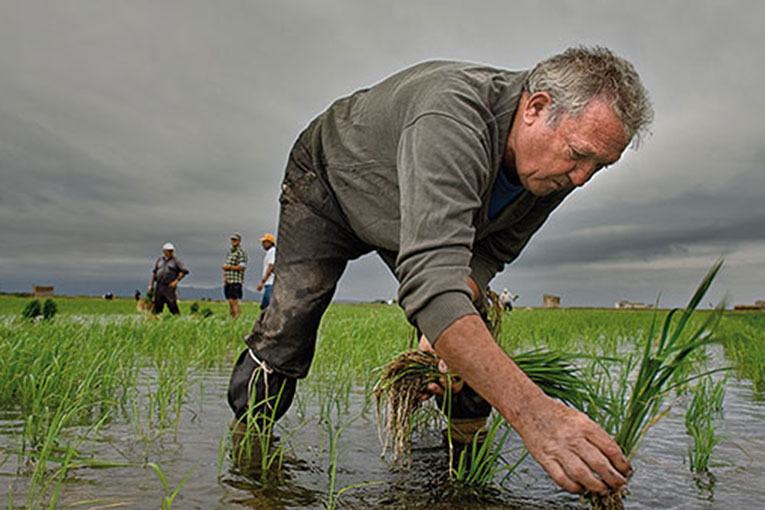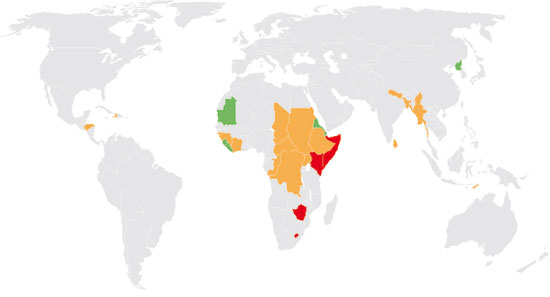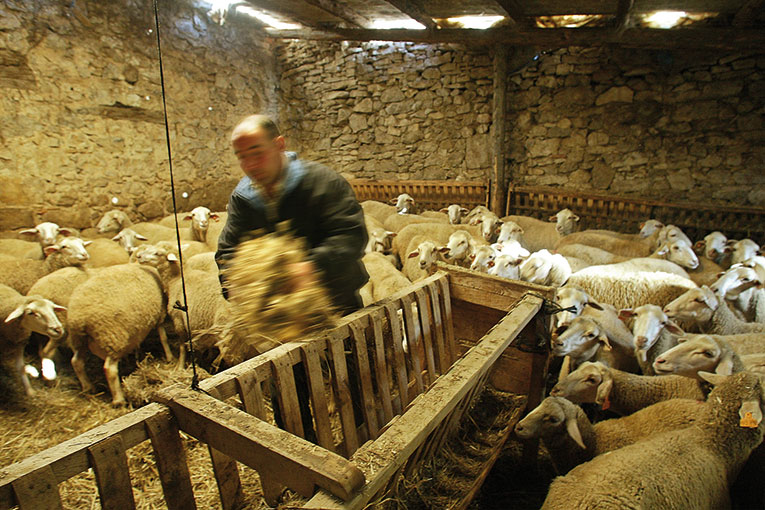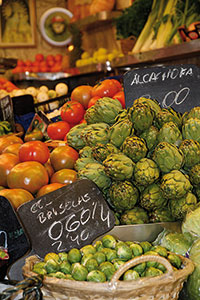 |
||
|
The first decade of the new century has seen the return to an old controversy: the possible imbalance between population and food supply on a global scale. The trigger has been the sharp rise in food prices that took place between 2006 and 2008. During the last half century the increase in world agricultural production has been tremendous and has enabled food availability per person to rise significantly, even in most developing countries; however, there is no guarantee that in the coming decades it will be possible to maintain a similar pace of growth in productivity, nor to do so in an environmentally and socially sustainable way. Concern about a possible trend towards an imbalance between food production and population has an honourable classical precedent in economic thought: Thomas Robert Malthus (1766-1834). The great economist and Anglican cleric believed that a natural tendency drove the human population to expand beyond the means of subsistence within its reach, until a series of natural controls (poverty, illness) would finally return a balance of low per capita income. His arguments tended to stress that any improvement in average income levels of the population would be temporary, sooner or later to be neutralized by an induced increase in the number of mouths to feed. Since then the likelihood of a fundamental contradiction between rapid population growth and finite food production potential has always been present, leading to huge and successful sales of literature airing the most alarmist viewpoints. However, the thousand million (or U.S. billion) people who populated Earth at the time of Malthus have increased six-fold since then, but his prophecies have been borne out by reality. Despite a population growth at a rate never before known to humanity, agricultural production has increased even faster, so food availability per capita has risen steadily. Major advances in technology applied to agriculture and livestock-raising have led to increased yields per unit of cultivated area or per head of cattle, and therefore increased productivity is the main source of an increased food supply, rather than the expansion of cultivated area alone. Thanks to this, the limits to production growth have shifted to an ever more distant horizon, while trade between major economic regions with unequal endowment of natural resources has allowed these resources to be used ever more efficiently. There is also something that escaped Malthus’ keen senses, and the rate of population growth is not a purely natural phenomenon, but it is an endogenous variable that evolves on changing the economic and social environment in which human life develops. It is for this reason, precisely, that economic development and the cultural changes it brings, such as education and emancipation of women, can significantly reduce birth rates and ease the rate of population expansion. Nonetheless, population growth is still high in many developing countries, where the rapid fall in mortality is not immediately accompanied by a parallel decrease in birth rate, since changes in attitudes and lifestyles require a longer period of adjustment. However, fortunately, it cannot be said that we have been witnessing a version of Malthus’ predictions restricted to the Third World, at least in the last half century. Food production per capita has grown even faster in most regions of the developing world than in highly industrialized countries. Thus, countries like India or China, which used to be cited as examples of a «demographic bomb», had a level of agricultural output per capita in 2007 that was respectively 139% and 279% of that available in 1970. This does not mean we live and the best of worlds, as the global number of undernourished people is still shockingly high, standing at around 925 million according to the FAO (Food and Agriculture Organisation of the United Nations). However, to point out the severity of a problem is not the same as saying that the problem is getting worse over time. On the other hand, improvements in the world food situation have been rather unevenly spread, and there are many shortcomings to be found in African countries south of the Sahara, a consequence of economic stagnation, war and political chaos that have plagued this region in recent decades. ■ FOOD INEQUALITIES The world’s food problem is not derived from a shortage of food availability per capita globally, as the FAO likes to remind us, but lies in the lack of access to food by a significant number of people. It is the manifestation of poverty that prevents the basic needs experienced by large segments of the population from leading to an effective demand in the market and thus generating an appropriate response in terms of offer, either locally or through the purchase of imported products. Neither has the food shortage been dealt with sufficiently from the perspective of food aid supply.
On a global scale, the rapid growth in food availability has set a trend of lower food prices in real terms, albeit with temporary interruptions, one of which was quite recent (2006-2008). Such a decrease in prices has greatly increased the possibilities of globally satisfying one of the most basic needs of human beings. However, this does not necessarily mean that in the future this trend will continue, which leads us to ask the following question: will the twenty-first century be the scene of a global food crisis, with sharp increases in food prices? Predictions as to the availability of food per capita over the coming decades revolve around certain assumptions about the population’s behaviour, per capita income and the responsiveness of agricultural supply to growing demand. It is worth noting that the world population has now entered a clear process of slowing down its growth pace, not only in countries with high income, but also in middle-and low income countries. Nonetheless, global population increase in absolute terms will still be very high over the next four decades, in the order of 2,200 million people according to the United Nations. Furthermore, most of this growth will be located in low income countries, where the food demand is more strongly linked to the increase in living standards. ■ NEW CHALLENGES Several factors will require a particularly great effort to be made in terms of agricultural supply in order to adapt to new pressures in terms of demand. First, the demand for meat and dairy products is expected to grow substantially, in line with rapidly rising living standards in some more populous developing countries, especially China. The demand for these goods is more elastic or sensitive to changes in the level of family income than products such as cereals or tubers. At the same time, livestock farming is becoming increasingly more intensive, and cattle are fed with fodder derived from the production of cereals and vegetable fats, which contributes to considerable pressure on global plant-food resources. Secondly, agriculture is now facing new demands related to biofuel production. The commitment of many governments, mainly in industrialized countries, to the gradual replacement of fossil fuels by renewable energy sources has greatly boosted the use of corn, rapeseed and other products as biomass for energy production. In the 2007-08 harvest, nearly a quarter of corn production in the U.S.A. was destined to ethanol production, a significant increase when taking into account that the proportion was only 10% in 2002-03.
The recent 2006-2008 food crisis, in which food prices rose rapidly, serves as a warning of the tensions that can affect the global food system. The problem was particularly acute in a large group of developing countries that are net importers of agricultural products and where, because of their low incomes, between 50 and 70% of families total expenditure is still spent on food. In Eritrea, Burundi, Liberia, Bangladesh, Zimbabwe and Haiti, among other countries, the poorest families were faced with a decline in their nutritional status due to a sharp increase in their weekly grocery bill. The crisis has also undermined confidence in the international agricultural trading system, given some producer countries’ reaction of establishing export restrictions. Meanwhile, some major importers such as China, Saudi Arabia and South Korea have chosen to purchase or lease large cultivation areas in other countries in order to produce their own food there, instead of importing it. Unfortunately, we have not witnessed much progress in terms of a positive response to the crisis such as the creation of an international system of grain reserves, which would enable us to ease the strongest fluctuations in world market prices. Finally, not only is it important to ensure the future growth of world food production at the right pace, but also to be able to do so without causing irreversible damage to valuable ecosystems supporting human life. It is increasingly recognized that some farming systems can represent an important source of damage to the environment. This has to do with the expansion of the land area destined to agriculture, often at the expense of valuable forest lands and wetlands. It also relates to the increase in cropping intensity, as the area under irrigation and the number of machines for agricultural use have doubled since 1960, fertilizer consumption has quadrupled, or in the case of nitrogenous fertilizers increased seven-fold. Although the increased use of these production factors has significantly contributed to increasing world food production, it is no less true that locally excessive or inappropriate use causes a strong environmental impact and, in particular, the loss of natural habitats and the biodiversity they harbour, as well as the disappearance of their valuable environmental role. With respect to fertilizers, it is estimated that between approximately 30% and 80% of nitrogen applied to agricultural land seeps into the water and atmosphere, representing a source of pollution. Furthermore, irrigation water is often used inefficiently, thereby causing waterlogging and soil salinisation. Meanwhile, the massive use of agricultural machinery contributes to the increase in global consumption of fossil fuels, which in turn influences global warming. The need to continue increasing world agricultural production suggests that, in the future, even greater use of the production elements above will be inevitable –irrigation, machinery, fuels, fertilizers, pesticides, etc.–. However, it is risky to assume that these resources will be as readily available as they are at present, or that the environmental impacts of their management will be negligible. It is therefore particularly important to improve the efficiency of agricultural systems, minimizing the use of scarce resources and adopting sustainable technologies. Although definitions of sustainability are very diverse, a common feature is to require that economic and environmental costs of farming systems do not rise over time, and that the poorest strata of the population can increase their income to the extent necessary to register significant improvements in nutrition and access to education and health services. Sustainability also plays a role in the strength or resilience of agricultural systems when it comes to overcoming natural and economic shocks or imbalances. Developmental policies should, therefore, aim for poor farmers in developing countries to be able to acquire this capacity, and not see their livelihoods threatened, or to be forced into taking tough decisions –like taking their children out of the education system or relinquishing charges for basic health-care– due to a lack of margins to manage crisis situations, such as those experienced lately. |
© M. Lorenzo Not only is it important to ensure the future growth of world food production, but also do so in an environmentally sustainable way. The picture shows the rice harvest in the paddy fields of the Albufera Natural Park in Valencia, an example of the interplay between natural ecosystems and agricultural crops. «Not only is it important to ensure the future growth of world food production at the right pace, but also to be able to do so without causing irreversible damage to valuable ecosystems»
«The world’s food problem is not derived from a shortage of food availability per capita, but liesin the lack of access to food bya significant number of people» |
|
References
Abbott, P., 2009. «Development Dimensions of High Food Prices». OECD Food, Agriculture and Fisheries Working Papers, 18. Available at: <http://ideas.repec.org/p/oec/agraaa/18-en.html>.
Compés, R., García Alvarez-Coque, J. M. & E. Reig, 2002. Agricultura, comercio y alimentación. La OMC y las negociaciones comerciales multilaterales. Ministerio de Agricultura, Pesca y Alimentación. Madrid.
Food and agriculture organisation of the united nations, 2009. The State of Food Insecurity in the World 2009. Food and Agriculture Organisation of the United Nations. Rome.
Gómez-Limón, J. A. & J. Barreiro (coord.), 2007. La multifuncionalidad de la agricultura en España. Concepto, aspectos horizontales, cuantificación y casos prácticos. Ministerio de Agricultura, Pesca y Alimentación y Eumedia. Madrid.
Hazell, P. & S. Wood, 2008. «Drivers of Change in Global Agriculture». Philosophical Transactions of the Royal Society B, 363: 495-515.
Pretty, J., 2008. «Agricultural Sustainability: Concepts, Principles and Evidence». Philosophical Transactions of the Royal Society B, 363: 447-465.
Rao, N. H. & P. P. Rogers, 2006. «Assessment of Agricultural Sustainability». Current Science, 91 (4): 439-448.








